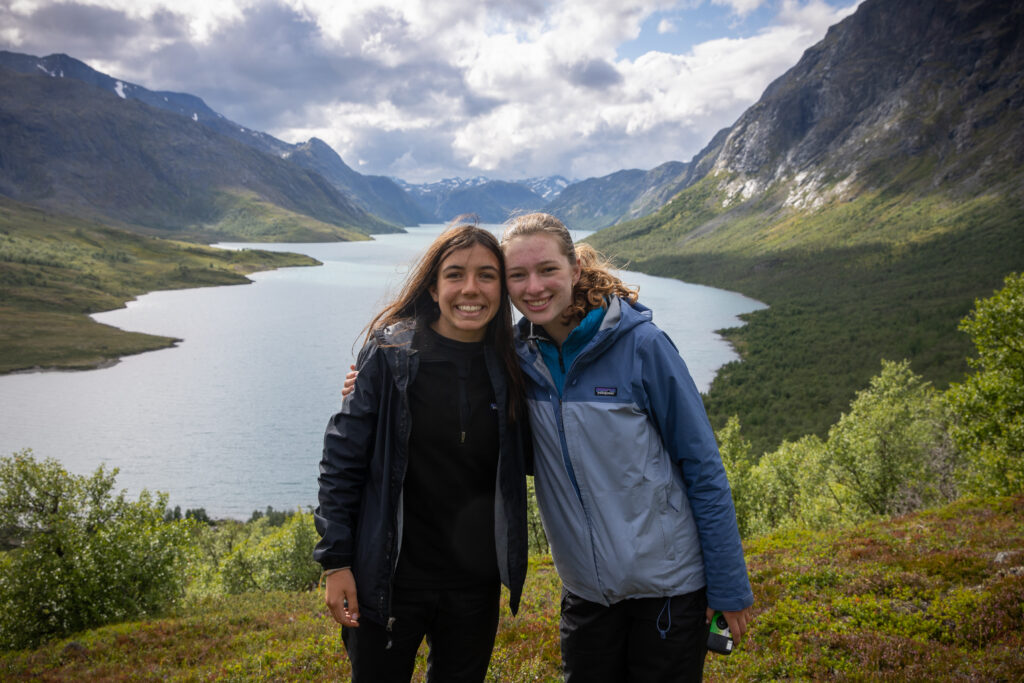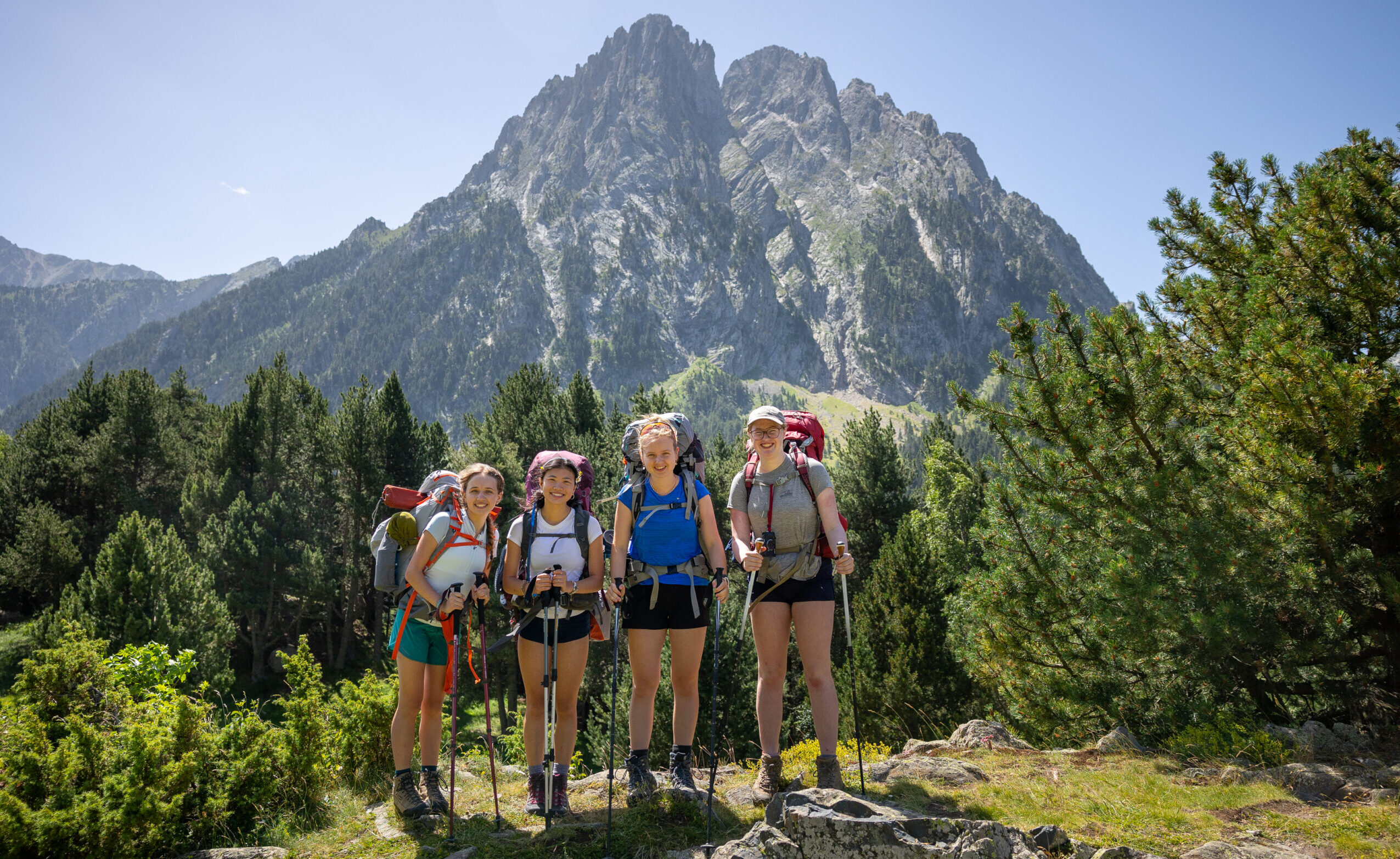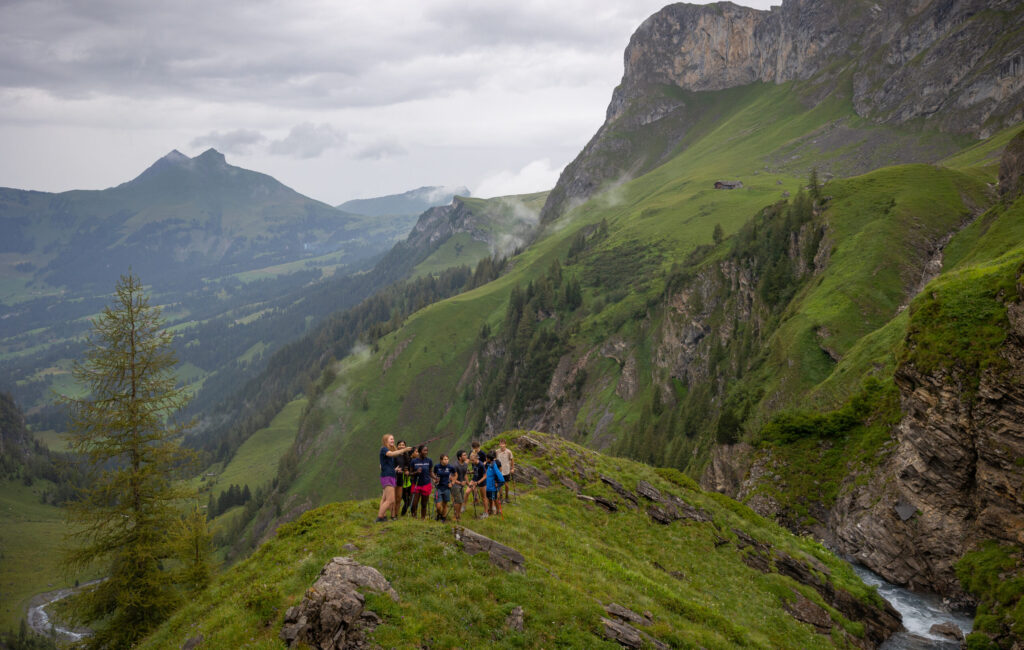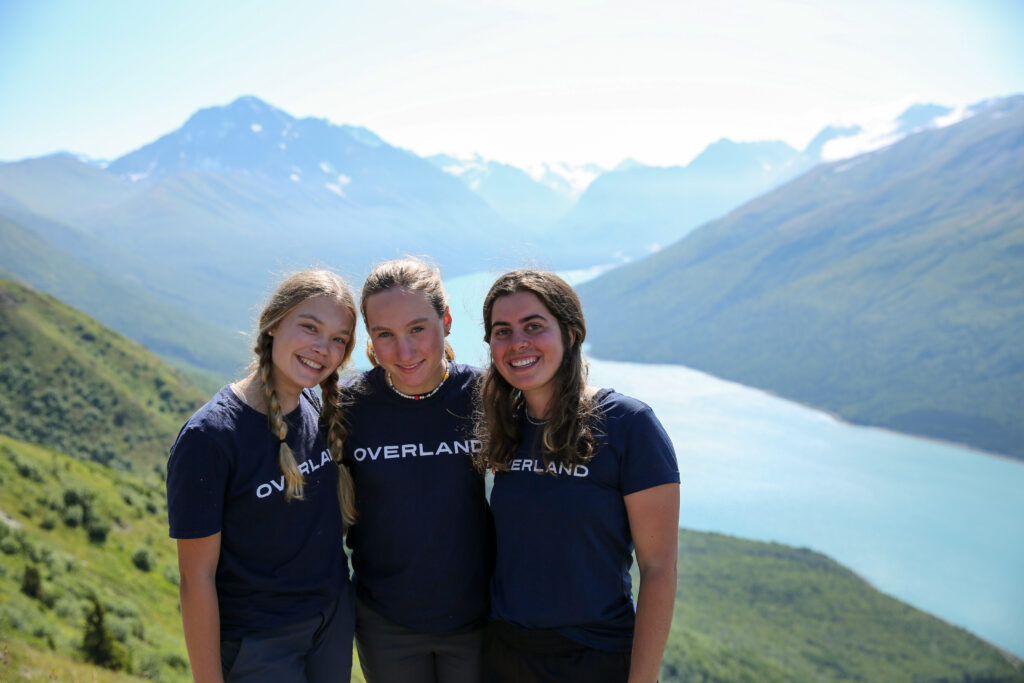In this second post in a three-part series on getting the right gear for your teen summer hiking trip, we take a close look at Overland’s recommendations for the following items:
- Hiking Boots
- Backpack
- Sleeping Bag & Pad
- Clothing Layers
- General Gear
Read on for our best tips for purchasing the gear you’ll need for your summer hiking trip!
QUESTION #1: How Should My Hiking Boots Fit?
The link between your body and the trail, hiking boots provide traction, comfort, and stability for your whole body while carrying a pack. Great fit is paramount: the boots should be snug (but never too tight), while offering just enough space to wiggle your toes slightly. A style of boot that wraps above (not below) the ankle will provide stability and ankle support. Be sure to try the boots on with a good pair of mid-weight synthetic hiking socks, which will help keep your feet dry and blister-free. Perhaps most importantly, be sure to break in (wear) your boots frequently before your trip– your feet will thank you!

QUESTION #2: What Size Backpack Will I Need?
Your internal frame backpack should have a volume between 50 and 75 liters, depending two factors:
- Your height and weight. Smaller body? Smaller pack. Bigger body? Bigger pack. This is why it’s important to try on a number of backpacks.
- The length of your backpacking trip. On Overland’s Explorer trips the backpacking section of the trip is usually two or three days long; on Overland’s Expedition trips, the backpacking section is three or four days long, and on our Challenge trips the backpacking section is usually four or more days long. The longer the trip, the bigger the pack (to accommodate additional gear and food). Regardless of size, the pack should fit your body comfortably and distribute the weight of your gear evenly.
In-store employees at outdoor stores can offer great advice and can even custom fit backpacks based on your body type by swapping out hip belts and adjusting strap positions. Overland groups have had good success with reputable outdoor brands such as Osprey, Deuter, and Gregory.
QUESTION #3: What is a Good Temperature Rating for a Sleeping Bag?
To ensure a great sleep, choose a sleeping bag with a temperature rating a few degrees colder than the coldest temperatures you’ll likely encounter. If you’re camping at elevation, be prepared for slightly cooler temperatures. It’s always easy to cool a warm sleeping bag by unzipping as necessary. Overland recommends synthetic sleeping bags, which are easy to care for and, most importantly, won’t lose their warmth when wet (as goose down will).
A comfortable sleeping pad also provides insulation and warmth: inflatable backpacking mattresses are lightweight, pack down small, and offer great comfort– but a simple closed-cell foam pad is inexpensive and reliable, and will always do the trick!
QUESTION #4: How Can I Choose the Right Clothing Layers?
Once you’ve secured great boots, a properly fitting backpack, and a warm sleeping bag and pad, it’s time to pack your three layering systems: base layers (lightweight) to wick moisture away from your body, mid-weight layers to insulate & keep a layer of warmth close to your body, and outer layers to shield you from wind and rain. By using these three layers in combination, you’ll stay warm and comfortable in all conditions.
Most of these layers can be found at home: synthetic sportswear makes for great lightweight layers, and a synthetic fleece top will insulate well. No matter the forecast, it is essential to be prepared for rain. Look for quality rain jackets and pants made of Gore-Tex® or similar waterproof and breathable fabrics, which will keep you dry and comfortable even as your body is working hard in the mountains.

QUESTION #5: Which Pieces of General Gear Do I Need?
General gear items—like a bright headlamp (with extra batteries) and adjustable trekking poles—can make a good experience even better. But keep your general gear purchases reasonable: and if you’re heading out on an Overland trip, stick to the gear list for your trip—nothing more, and nothing less!
CONCLUSION
With our best gear tips in mind (and a shopping list in hand), get your gear organized well before your summer hiking trip. Then, once you’re on your Overland trip, you’ll be comfortable. And being comfortable makes the adventure all the sweeter!
LIKE THIS POST?
It’s the second in a three-part series.
How To Choose A Summer Adventure For Your Child
Get first-hand insights into what you should look for when choosing the next summer travel adventure for your child.





